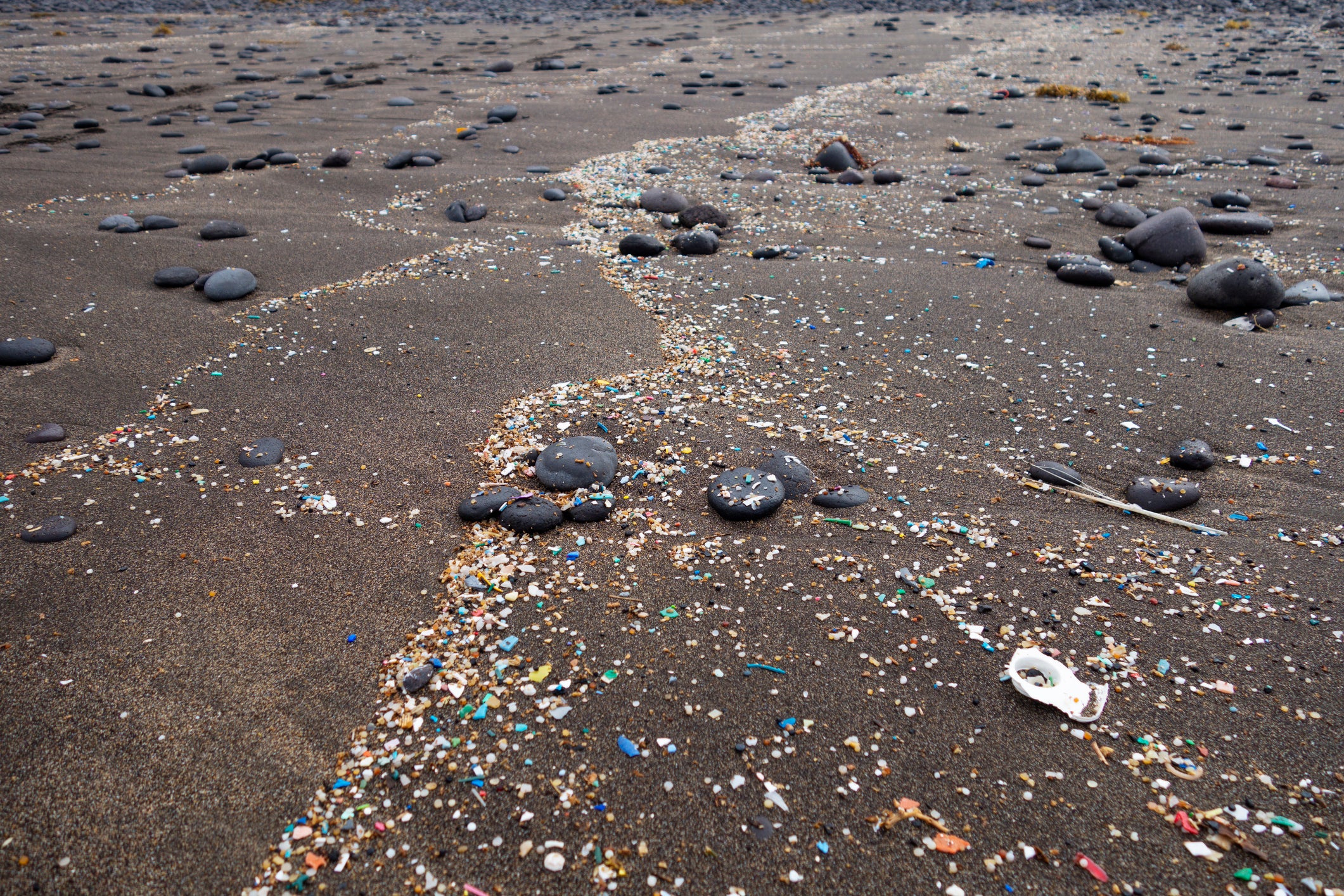Microplastics
June 12, 2021
Written by Claire Wang
Every year, 5-14 million tons of plastic are dumped into the ocean. This means 500 pounds of plastic enter the ocean every second. However, if that much plastic entered the ocean every year, then visible, floating plastic debris would only account for about 1% of the total trash in the ocean. Where is the other 99%?

The other 99% of the plastic is not visible, called microplastics. These are pieces of plastic that are less than 5 millimeters in length and sink towards the bottom of the ocean. Some microplastics form when large pieces of trash degrade into smaller pieces due to erosion from the sun, wind, and waves. Others started out as small pieces of plastic, such as microbeads, tiny pieces of polysynthetic plastic that are added to exfoliants to health and beauty products. Fortunately, microbeads were banned in the U.S. in 2015.
Microplastics are extremely harmful because of how small they are. Marine animals can accidentally swallow them and it will end up in their digestive tract. It can clog up their digestive tract, diminish the urge to eat, and alter feeding behavior. Filter feeders, such as manta rays, are particularly at risk. It is not known how much humans are affected by microplastics, but researchers do know that microplastics only stay in an animal’s digestive system, and humans usually eat muscle tissue, so in terms of eating seafood, humans are not affected much.
To find out where microplastics were located, researchers at the University of Manchester conducted an experiment and found out that microplastics are often concentrated on the bottom of the ocean, in areas called drift deposits. Drift deposits look like underwater sand dunes and contain natural sediment, but may also contain some amount of microplastics.

Researchers from the Commonwealth Scientific and Industrial Research Organization estimate that there are about 14 million tons of microplastic on the ocean floor. They collected samples from 1600 to 3000 meters deep in the ocean. However, their research area, off the coast of Australia, was not near areas with a high population density, so their estimate would be a conservative estimate. Even so, 14 million tons of microplastic is still an incredibly huge amount of plastic on the bottom of the ocean.
To monitor microplastics in their own region, researchers from Monterey Bay Aquarium in California sent a machine down the ocean to collect samples up to 1000 meters below the surface of the water. They found out that most microplastics were 600 feet below the surface of the ocean and the most common one was PET, a plastic polymer used in single use plastics such as plastic water bottles.
What can you do to help?
Recycling alone is not enough to reduce the amount of plastic, or microplastic in the ocean. People have to reduce their use of plastic together. Here are some ways you can reduce your plastic use:
-
Stop buying bottled water and have your own reusable water bottle
-
Bring reusable cloth bags when shopping
-
Buy more bulk food (the plastic packaging is less)
-
Avoid single use plastics in general (like plastic straws)
-
Stop chewing gum- gum contains some amount of plastic
-
Reduce how often you order food from a restaurant- take out usually results in a lot of plastic containers
-
If you shop at a farmer’s market, ask them to refill your plastic container instead of buying a new container every time
-
Buy things that come in cardboard boxes instead of plastic containers
-
Buy beverage bottles in glass instead of plastics
If everyone reduces their plastic use, the amount of microplastic in the ocean will be reduced. The amount of change one person can make is incredibly small, but if all of us work together, the change will be huge!
Sources Used
- https://oceanservice.noaa.gov/facts/microplastics.html
- https://www.nationalgeographic.com/magazine/article/plastic-planet-health-pollution-waste-microplastics
- https://sitn.hms.harvard.edu/flash/2020/14-million-tons-of-microplastic-are-on-the-ocean-floor/
- https://www.bbc.com/news/science-environment-52489126
- https://www.youtube.com/watch?v=LiH3f6AKFbc
